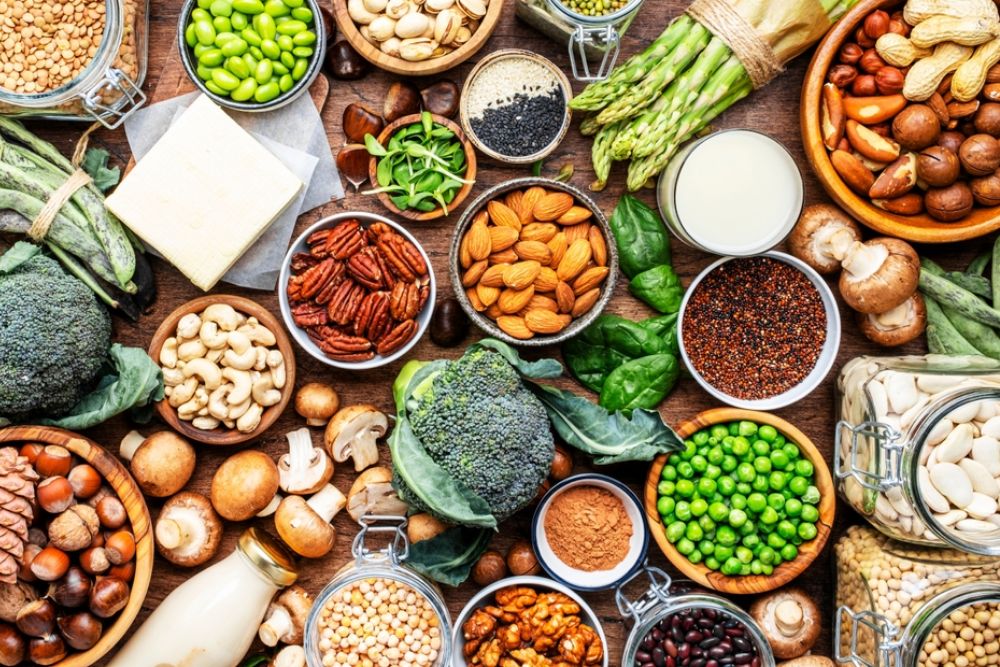Groceries keep getting more expensive, and meat prices are often the biggest budget busters on the list. From steak and chicken to pork and seafood, protein can eat up a good chunk of your food bill. But there's a simple, healthy, and cost-effective solution: plant-based proteins.
You don’t have to go fully vegetarian to save money—just replacing a few meat-heavy meals a week with plant-based options can make a noticeable difference. With a little creativity and planning, your meals can still be satisfying, delicious, and nutritious—without the steep cost of animal protein.
Here’s how to make the switch and why it pays off.
Why Plant Proteins Are a Budget-Friendly Choice
Animal proteins like beef, chicken, and fish tend to cost more per pound than plant-based options. Over time, this adds up—especially for families or anyone meal-prepping in bulk.
Plant-based proteins are not only more affordable but often have a longer shelf life, are easier to store, and come in a wide variety of forms. You’ll also gain the added benefit of fiber, lower saturated fat, and heart-healthy nutrients.
Even swapping meat out just two or three meals a week can trim your grocery budget without leaving you hungry.
Try These Affordable Plant-Based Protein Sources
The best part about plant proteins? There’s a wide variety—and most are pantry staples.
-
Lentils: High in protein and fiber, red and green lentils cook quickly and work in soups, stews, or curries.
-
Chickpeas: Great in salads, stir-fries, or made into hummus or falafel.
-
Tofu: Absorbs flavor well, is high in protein, and works in stir-fries, scrambles, or baked dishes.
-
Tempeh: A firmer soy-based product that has a nutty flavor and holds up well in sautés and sandwiches.
-
Black beans and kidney beans: Perfect in tacos, burrito bowls, or chili.
-
Quinoa: A protein-rich grain that can replace rice or be added to salads.
-
Peas, edamame, and green lentils: Fresh or frozen, these can be added to pasta, rice bowls, or soups.
These items often cost just a few dollars per bag or can—and stretch far more than a single cut of meat.
Start with Meatless Versions of Your Favorite Meals
You don’t have to reinvent your entire meal plan. Just tweak what you already enjoy.
-
Tacos: Swap ground beef for seasoned black beans or lentils.
-
Chili: Use a mix of beans and vegetables instead of beef or turkey.
-
Burgers: Try lentil or black bean patties—they’re filling and flavorful.
-
Pasta dishes: Add sautéed mushrooms, spinach, or chickpeas instead of meat sauce.
-
Stir-fries: Replace chicken with tofu or edamame, and load up on veggies.
You still get the familiar texture and flavor—but at a much lower cost.
Batch Cook and Freeze Plant-Based Meals
Prepping plant-based meals in advance helps reduce food waste and impulse purchases.
-
Cook large batches of lentils, beans, or grains and freeze in portions.
-
Make extra servings of veggie chili or soups and freeze for quick lunches.
-
Prep smoothie packs with plant-based protein powder, oats, and frozen fruit.
-
Bake a tray of tofu or tempeh and store it for the week ahead.
Having food ready to go saves both time and money—and makes plant-based eating more convenient.
Don’t Forget Nuts, Seeds, and Nut Butters
These may seem pricier upfront, but they go a long way and add richness to meals.
-
Peanut butter and almond butter: Great for sandwiches, smoothies, or dipping fruit.
-
Chia seeds: Packed with omega-3s and protein—use them in puddings or smoothies.
-
Hemp seeds and sunflower seeds: Sprinkle on salads or oatmeal for an extra protein boost.
-
Cashews: Soak and blend to make creamy sauces for pasta or bowls.
A little goes a long way, and they add valuable nutrients to your diet.
Buy Dried Beans and Grains in Bulk
Canned beans are convenient, but dried beans are cheaper by volume—and last longer.
-
Buying in bulk saves money and reduces packaging waste.
-
Cook a large pot and portion it out for the week.
-
Grains like rice, quinoa, bulgur, and couscous are inexpensive and shelf-stable.
Stocking your pantry with these staples makes it easy to throw together healthy meals on a budget.
Explore World Cuisines for Flavor and Inspiration
Many global cuisines already use plant-based ingredients as their foundation.
-
Indian cuisine: Lentil dals, chickpea curries, and vegetable stews.
-
Middle Eastern cuisine: Hummus, tabbouleh, falafel, and stuffed grape leaves.
-
Asian cuisine: Tofu stir-fries, edamame bowls, veggie sushi, and miso soup.
-
Latin American cuisine: Bean tacos, rice bowls, plantain dishes, and salsas.
These meals are naturally flavorful, budget-friendly, and perfect for meatless inspiration.
Supplement with Eggs and Dairy (If You Eat Them)
If you’re not fully plant-based, eggs and dairy can fill the protein gap affordably.
-
Eggs are versatile, inexpensive, and quick to cook.
-
Greek yogurt offers a good protein punch for breakfast or snacks.
-
Cheese in moderation can add flavor to veggie-rich meals.
These options give flexibility without completely relying on animal meat.
Make the Shift Gradually
You don’t need to make a drastic change overnight.
-
Start with one or two meatless meals per week.
-
Try “Meatless Mondays” or “Plant-Powered Fridays.”
-
Introduce your household to new recipes slowly to build acceptance.
Gradual transitions are more sustainable—and allow you to find recipes you truly enjoy.
Swapping expensive meats for plant-based proteins is one of the easiest and healthiest ways to cut down your food expenses. You won’t just save money—you’ll also expand your cooking skills, try new flavors, and likely improve your nutrition.
The key is starting small, using familiar ingredients, and keeping your pantry stocked with affordable, protein-rich staples. With just a few tweaks, you can eat well, feel full, and spend less at the grocery store—all while doing something good for your health and your wallet.





